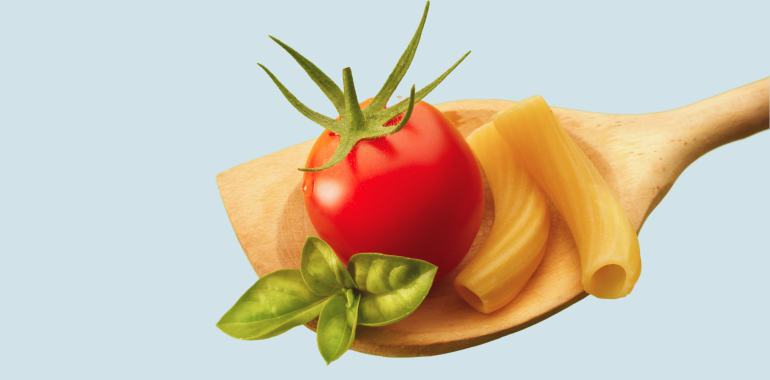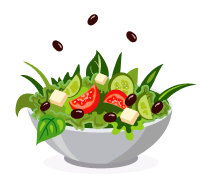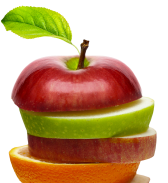Table Of Contents
What is OMAD?
OMA, or eating once a day, is intermittent fasting in which a person only eats food once in a 24-hour cycle. OMAD is a diet where you alternate between a period of fasting and one meal session. For example, you can eat by 7 am, then fast for the next 23 hours.
OMAD is a tricky fasting measure adopted by most people looking to shed some weight as quickly as possible. But the question remains? How effective is it in helping people lose weight? Well, we’ll find out in this post.
What Happens if You Only Eat One Meal a Day: Discover Body Reaction
While intermittent fasting and alternate-day fasting have gained popularity, it’s essential to understand how your body reacts to such practices.
Metabolic Changes
When you consume just one meal daily, your body undergoes metabolic adjustments. Firstly, your metabolic rate may decrease due to reduced calorie intake.
American Journal of Clinical Nutrition shows prolonged fasting can lower your resting metabolic rate. When your body becomes more efficient at conserving energy, losing weight can make it more challenging.
Blood Sugar Control
Maintaining stable blood sugar levels is crucial for overall health. Consuming only one meal a day may disrupt this balance. When you eat a single meal, you may experience a sharp increase in blood sugar levels followed by a rapid drop. This fluctuation can lead to fatigue, irritability, and difficulty concentrating.
Nutritional Deficiencies
Eating just one meal can make meeting your body’s nutrient requirements challenging.
Food intake is limited, so you may not consume adequate amounts of essential vitamins, minerals, and other nutrients. Long-term nutritional deficiencies can negatively impact your health.
Digestive Health
The timing and frequency of meals recreate a significant role in digestive health. Consuming a large meal may lead to digestive issues such as bloating, indigestion, and discomfort.
Additionally, the lack of regular meals can disrupt bowel movements, potentially leading to constipation.
Psychological Effects
While the physical implications of eating only one meal a day are essential to consider, we must recognize the psychological effects. Restricting your eating to a single meal may lead to obsessive thoughts about food, an unhealthy relationship with eating, and an increased risk of developing disordered eating patterns.

OMAD Diet Rules
Is it healthy to eat once a day? Let’s revise!
Regarding OMAD, the general rule is to eat for an hour one then fast for the next 23 hours. It is a form of intermittent fasting and an extreme fasting measure. Adopting this complicated approach triggers weight loss by supplying the body with fewer calories and minimizing food consumption for an extended period. Aside from the timing rules, there is also a restriction on the food eaten.
A diet plan must be prepared to help guide what to eat. Nevertheless, some foods to eat during an OMAD diet recommended by nutritionists include.
OMAD Meal Plan: What to Eat on OMAD?
To get the full results of the OMAD diet, there are some recommended meals that you must integrate into your meal plan. You cannot pick any food during the free-eating window. Instead, you must choose foods to help achieve your goal of going on an OMAD diet.
- Protein
When planning your OMAD diet, integrate animal proteins such as Fish, Lean meats, Chicken, Beef, Pork, Eggs, and other animal protein.
- Vegetables
Vegetables are vital for your health and should be integrated into all your meals as much as possible. Be creative in this aspect. For example, you can combine vegetables with meat or carbohydrates. In addition, you can add vegetables to your diet: Spinach, Cabbage, Waterleaf, etc.
- Fiber
Fibrous foods are good for weight loss because they provide a feeling of satiety when consumed. There are lots of options available for you to obtain these fibrous foods. In addition, you can integrate highly fibrous foods such as Oats, wheat, and barley into your meal plan.
- Fruits
They are another set of essential foods you should integrate into your OMAD meal plan. Types of fruits you can incorporate into your meal plan: bananas, apples, mango, and strawberries. Etc.
- Beverages
Fruits, juices, and lemonade.
Overcoming Omad Diarrhea – Strategies for Addressing Digestive Problems and Staying on Track
Diarrhea can be uncomfortable and disruptive, but you can manage it effectively with a few adjustments. Explore strategies to address OMAD-related diarrhea and maintain a healthy digestive system.
1. Gradual Transition
If you’ve recently started OMAD and are experiencing diarrhea, it may be due to the abrupt change in your eating pattern. Your digestive system needs time to adapt.
Consider gradually transitioning to OMAD by slowly reducing your meal frequency. This allows your body to adjust and minimizes the risk of digestive disturbances.
2. Hydration
Diarrhea can lead to dehydration, so it’s crucial to stay well-hydrated. Ensure to drink some fluids throughout the day, especially water. Replenishing lost fluids helps maintain electrolyte balance and supports optimal digestion.
Additionally, sipping on herbal teas or clear broths can provide additional hydration and soothe the digestive system.
3. Fiber Intake
The appropriate fiber in your OMAD meal can help regulate bowel movements and prevent diarrhea. Choose fiber-rich foods such as whole grains, legumes, fruits, and vegetables.
However, be mindful of your body’s tolerance to fiber. Introduce it gradually and monitor your symptoms. Too much fiber too soon can exacerbate diarrhea. Experiment with soluble fiber sources like oats, bananas, and cooked vegetables to provide bulk and promote healthy digestion.
4. Probiotics
Probiotics are beneficial bacteria that support a healthy gut. Including probiotic-rich foods in your OMAD meal can help habilitate the balance of gut flora and enhance digestive health. Yogurt, kefir, sauerkraut, and kimchi are excellent sources of natural probiotics.
Alternatively, you can opt for a high-quality probiotic supplement, but consult a healthcare professional before starting any supplementation regimen.
5. Identify Trigger Foods
Certain foods may trigger diarrhea in individuals. Pay attention to your OMAD meal composition and identify any potential trigger foods that may be causing digestive distress.
Common culprits include spicy foods, high-fat foods, artificial sweeteners, and lactose-containing products.
Keep a food journal to follow your symptoms and identify patterns. You may find relief from diarrhea by eliminating or reducing these trigger foods.
Foods to Avoid on OMAD
When on an OMAD diet, there are some meals you must try your possible best to avoid for the best Omad results. Therefore, the meals below are not recommended during an OMAD.
- Dairy: When on an OMAD diet, avoid dairy products such as milk, cream, yogurt, and cheese.
- Whole Grains: Avoid rice.
- Fats: Unhealthy oils such as groundnut oil, etc.
- Nuts: Groundnut, cashew etc.

Omad Before and After – Why You Should Consider Giving It a Go
Omad can provide numerous health benefits, including improved digestion, better blood sugar control, and lowered risk for cardiovascular disease. Additionally, it may improve your overall energy levels throughout the day and decrease inflammation due to reduced calorie intake.
Also, eating only once helps create more time in your schedule for work or other activities. You can accomplish more in a day without worrying about meal preparation and cleanup by eliminating the need for multiple meals.
And last, eating one large meal daily helps give your mind some much-needed rest from the constant digestion process that occurs during multiple meals throughout the day. This increased mental clarity can be beneficial for problem-solving or creative thinking.
Keto Omad – How Combining Then Can Boost Your Health
The combination of keto and OMAD can maximize fat-burning potential. By entering ketosis through the ketogenic diet, your body utilizes fat for energy efficiently. When coupled with OMAD, where you provide a longer fasting period, you extend your body’s time in fat-burning mode, potentially accelerating weight loss and promoting fat loss.
- Be aware of nutrient deficiencies or imbalances, and adjust your approach accordingly.
- Since both approaches restrict certain food groups or nutrients, focusing on nutrient-dense foods within your meal is essential.
- Before embarking on a Keto OMAD lifestyle, consider its long-term sustainability.
OMAD Benefits
OMAD has several benefits. Some of its benefits to the body include:
- Increases productivity
Eating one meal a day is one of the ways you can improve your productivity. However, for the best results, eat in the afternoon instead of the morning or evening.
- Accelerates weight loss
Several studies show the likelihood of losing weight through the OMAD diet. However, while OMAD may help you lose weight, the results may vary for different groups.
- Helps heal diabetes
Although it has not been ultimately proven yet, some medical experts believe that the OMAD diet can help those with diabetes because it will reduce the supply of Insulin.
- Improves mental clarity
OMAD helps improve mental clarity and makes you feel better.
Is Eating Once a Day Bad for Your Health – Make an Informed Decision
Potential Risks and Considerations
- Nutrient Deficiencies: Restricting your eating to a single meal can make it challenging to consume all the necessary nutrients your body needs in one sitting.
- Increased Hunger and Binge Eating: This heightened hunger could trigger overeating or unhealthy food choices when you finally do eat, leading to an imbalance in your overall diet.
- Individual Variations: Some individuals may find adapting to the one-meal-a-day pattern challenging due to lifestyle, personal preferences, and underlying health conditions.
OMAD Disadvantages: Does OMAD Diet Have Side Effects?
While OMAD may be advantageous for most people, there are situations when it can be harmful and lead to complications. Some of the constraints of an OMAD diet include the following:
Not suitable for pregnant or nursing mothers:
If you are pregnant, then an OMAD diet is not for you. Therefore pregnant women may develop certain complications if they eat one meal daily.
It may not lead to losing weight:
Although people who eat only meals may help lose some calories, the result varies, and some people did not notice any weight loss after going on an OMAD diet. To be safe, always avoid eating late into the night.
Eating One Meal a Day Weight Loss Results After 1 Week
The results of eating one meal a day for weight loss after one week can be substantial. Studies have found that losing 4-7 pounds in the first week alone is possible.
This dramatic weight loss is due to the extreme caloric restriction achieved by replacing all or most meals with just one large meal.
The type of food consumed during this one meal will also affect how much total weight is lost for a week and what kind of nutrition you are providing your body with.
How to Lose Weight with OMAD?
We have emphasized weight loss so well because most people on OMAD want to do it to lose weight. While there are no absolutes to these things, there are some simple tricks or lifestyles you can add to this diet to help you lose weight quickly.
1. Choose the correct hour
This is a critical factor if you want to lose weight on an OMAD diet. Ensure you eat during active hours and avoid late-night meals as much as possible.
2. Be consistent
Consistency is vital in everything. Losing weight is not easy; you must be willing to do the right things and stick to your decisions for a reasonable time. If you start an OMAD diet and stop just one week after, you should expect no results.
3. Eat healthy foods
Ensure you eat healthy foods such as fruits, vegetables, and protein. On the other hand, avoid high-carb foods if you want to lose weight.
4. Exercise
You should not only eat one meal a day. Do it alongside some physical activities that will increase the rate of calorie loss.
One Meal a Day Diet: How to Get Started in the Right Way
Set Realistic Expectations: Remember that your body might require an adjustment period to adapt to your updated eating routine.
Plan Your Meal Carefully: This will help you meet your body’s nutritional needs despite the limited eating window.
Prioritize Protein: It helps promote satiety, supports muscle maintenance and repair, and aids in healthy metabolism.
Emphasize Fiber: It contributes to feelings of fullness and promotes digestive health.
Hydrate Throughout the Day: It’s essential, regardless of your eating pattern.
Conclusion
Eating One Meal a Day is one way to lose weight, improve your body and feel better. While the omad weight loss can be safe for most people, it’s essential to consult your physician for advice first to know its pros and cons. Finally, we believe you have learned a lot about the OMAD diet from this post. Thank you!
William is from Canada, he is passionate nutrition & wellness writer. William understands that the topic of wellness is still not well understood, so his goal is to enlighten and teach people how to live healthier and happier in their bodies.










OMAD diet seems like a good fit for me. I like the idea of eating one satisfying meal a day rather than constantly snacking throughout the day!
I’m interested in trying the OMAD diet, but I’m not sure if eating just one meal a day is safe. What precautions should I take to ensure I get all the nutrients I need?
Hey, Paul!
Trying the OMAD (One Meal a Day) diet can be a great choice for improving your health. To ensure you get all the nutrients you need, focus on a balanced meal with lean proteins, colorful fruits and vegetables, whole grains, and healthy fats. Consider consulting a healthcare professional or registered dietitian for personalized guidance, ensuring your safety and optimal nutrition. Enjoy the process and prioritize your well-being!
How can I ensure I’m not losing muscle while on this diet?
Hi, Liza!
To preserve muscle while on your diet, focus on consuming sufficient protein, engaging in regular strength training, and ensuring a balanced caloric deficit. Adequate sleep and hydration, along with gradual adjustments to your exercise routine, will further support muscle retention.💪
I appreciate that this article emphasized the importance of listening to your body and adjusting the diet to fit your individual needs.
Hello, Lara!
It’s great that you recognized the article’s focus on listening to your body and customizing your diet based on that. 😊 It’s essential to recognize and honor our unique nutritional requirements for overall well-being.
Thank you for describing the rules of the OMAD meal plan and the effect of this diet on the body!
Hi, Mia!
Happy to help!😊